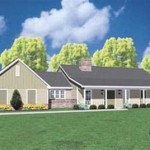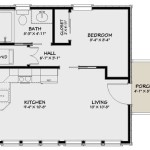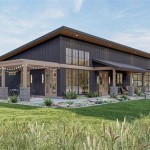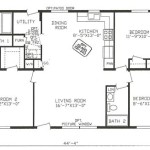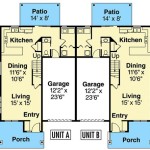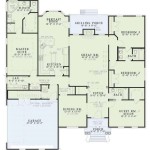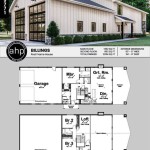House Plans for Low-Cost Homes: Maximizing Affordability and Functionality
The dream of homeownership is a cornerstone of societal aspiration. However, the escalating costs of construction materials, labor, and land often place this dream beyond the reach of many. This necessitates innovative approaches to home design and construction that prioritize affordability without sacrificing essential living requirements. House plans for low-cost homes represent a crucial segment of architectural design, focusing on efficiency in space utilization, material selection, and construction techniques to minimize expenses.
These plans are not simply about creating the smallest and cheapest possible dwelling. Rather, they are about intelligent design that addresses the specific needs of the occupants while remaining within a defined budgetary constraint. This requires a careful consideration of numerous factors, including local building codes, climate conditions, availability of materials, and the skills of the labor force. The process involves a strategic balancing act between design aesthetics, functionality, and cost-effectiveness.
The development of house plans for low-cost homes often involves a shift in perspective. Traditional notions of spaciousness and architectural grandeur may need to be reconsidered in favor of pragmatic solutions that prioritize practicality and sustainability. This may involve the incorporation of open-plan living spaces, multi-functional rooms, and efficient storage solutions to maximize the perceived space and minimize the need for expensive additions.
Key Considerations in Low-Cost Home Design
Several key considerations significantly influence the design and execution of low-cost home plans. These encompass material selection, construction techniques, and spatial efficiency, each playing a critical role in controlling overall costs.
Material Selection: Choosing affordable and readily available materials is paramount. Locally sourced materials can significantly reduce transportation costs and support local economies. Alternatives to traditional materials, such as reclaimed wood, recycled materials, and cost-effective concrete products, can offer both economic and environmental benefits. Material sizes should also be considered to minimize waste. Standardized lengths and widths can reduce the need for extensive cutting and shaping, lowering labor costs and material waste. Further, the long-term durability and maintenance requirements of the chosen materials must be evaluated to ensure that the initial cost savings do not translate into higher expenses over time. The lifecycle cost analysis is crucial.
Construction Techniques: Streamlining the construction process is essential for minimizing labor costs and project timelines. Simple and efficient building methods, such as modular construction, pre-fabricated elements, and simplified foundation designs, can significantly reduce construction time and the need for specialized labor. Modular construction, for instance, involves building sections of the house in a factory setting and then assembling them on site. This approach minimizes on-site labor, reduces material waste, and ensures consistent quality. Similarly, pre-fabricated elements, such as trusses and wall panels, can accelerate the construction process and reduce the potential for errors. The choice of construction technique should also consider local building codes and regulations, as well as the availability of skilled labor familiar with the chosen method.
Spatial Efficiency: Optimizing the use of available space is crucial for maximizing functionality within a limited footprint. Open-plan living areas, multi-functional rooms, and efficient storage solutions can help to create a sense of spaciousness and minimize the need for larger, more expensive homes. Open floor plans, which combine the living room, dining area, and kitchen into a single contiguous space, can significantly improve the flow of the home and create a more inviting atmosphere. Multi-functional rooms, such as a home office that can also serve as a guest bedroom, can further maximize the use of available space. Efficient storage solutions, such as built-in shelving, under-stair storage, and loft spaces, can help to keep the home organized and clutter-free, reducing the need for additional storage space.
Essential Design Elements for Affordable Housing
Certain design elements are particularly effective in contributing to the affordability and functionality of low-cost homes. These elements are not merely aesthetic choices but are integral to the overall efficiency and cost-effectiveness of the design.
Simple Rooflines: Complex roof designs can significantly increase construction costs due to the increased material usage and labor required for their installation. Simple gable or hip roofs are generally more affordable and easier to construct. These rooflines are also more efficient at shedding water and snow, reducing the risk of leaks and water damage. The pitch of the roof should also be carefully considered, as steeper pitches require more material and labor. A moderate roof pitch can balance the aesthetic appeal with cost-effectiveness. Furthermore, simple rooflines are often easier to maintain and repair, reducing long-term maintenance costs.
Strategic Window Placement: Windows are essential for natural light and ventilation, but they can also be a significant source of heat loss or gain, depending on their size, orientation, and glazing. Strategically placing windows to maximize natural light and ventilation can reduce the need for artificial lighting and air conditioning, saving energy and money. South-facing windows can capture solar heat in the winter, while east- and west-facing windows should be minimized to avoid overheating in the summer. The size of the windows should also be carefully considered, as larger windows are more expensive and can contribute to heat loss. Energy-efficient windows, such as double-paned or low-E windows, can help to reduce energy consumption and improve comfort. Overhangs and awnings can also be used to shade windows from direct sunlight, further reducing the need for air conditioning.
Compact Footprint: A smaller footprint generally translates to lower construction costs, as it reduces the amount of materials and labor required for the foundation, walls, and roof. Designing a compact home that efficiently utilizes every square foot is essential for maximizing affordability. Vertical construction, such as adding a second story or a loft space, can increase the living area without significantly increasing the footprint. Open-plan living areas can also help to create a sense of spaciousness in a smaller home. Careful planning of the layout is essential to ensure that the home is functional and comfortable, despite its smaller size. The orientation of the home on the lot should also be considered to maximize natural light and ventilation, and to take advantage of any passive solar heating or cooling opportunities.
Adaptability and Future Expansion
While affordability is the primary concern, it is also important to consider the long-term needs of the occupants. House plans for low-cost homes should ideally incorporate elements of adaptability and the potential for future expansion.
Flexible Living Spaces: Designing flexible living spaces that can adapt to changing needs over time is crucial. Rooms that can serve multiple purposes, such as a living room that can also be used as a home office or a guest bedroom, can increase the functionality of the home and reduce the need for future additions. Movable partitions and modular furniture can also help to create flexible spaces that can be easily reconfigured. The layout of the home should also be considered to ensure that it can accommodate future changes, such as the addition of a new family member or the need for accessibility features. Providing ample storage space is also important, as it can help to keep the home organized and clutter-free, regardless of how the space is used.
Provision for Future Additions: While the initial focus is on affordability, the potential for future expansion should be considered. Designing the home with the possibility of adding a second story or an extension in the future can provide flexibility and avoid the need to move to a larger home as the family grows. Planning for future plumbing and electrical connections during the initial construction can also simplify the addition process and reduce costs. The site plan should also be considered to ensure that there is sufficient space for future additions without compromising the functionality or aesthetic appeal of the home. This may involve setting back the home further from property lines or leaving space for a detached garage or accessory dwelling unit.
Sustainable Design Principles: Incorporating sustainable design principles into low-cost home plans can not only reduce environmental impact but also lower long-term operating costs. Energy-efficient appliances, water-saving fixtures, and passive solar design can significantly reduce utility bills. Sustainable materials, such as recycled content insulation and bamboo flooring, can also reduce the environmental footprint of the home. Designing the home to maximize natural light and ventilation can reduce the need for artificial lighting and air conditioning. Rainwater harvesting systems can provide a source of water for irrigation, reducing water consumption. Integrating landscaping that is drought-tolerant and requires minimal maintenance can also reduce long-term costs and environmental impact. Furthermore, a well-insulated home will require less energy to heat and cool, resulting in lower energy bills and a more comfortable living environment.
In summary, house plans for low-cost homes are a complex undertaking that requires a careful balance between affordability, functionality, and sustainability. By considering the key factors outlined above, it is possible to create homes that are both affordable and livable, providing a pathway to homeownership for those who might otherwise be priced out of the market. The focus should always be on intelligent design, efficient construction, and the long-term needs of the occupants.

Thoughtskoto Small House Architecture Construction Plan Low Cost Housing

Low Budget Small House Design Pinoy Designs

16 Cutest Tiny Home Plans With Cost To Build Craft Mart

Low Budget Small House Design Pinoy Designs

Livinghomes And Make It Right Introduce Affordable Green Prefab House Floor Plans Building A Container Home

3 Bedroom House Plans Home Designs Nethouseplansnethouseplans

16 Cutest Tiny Home Plans With Cost To Build Craft Mart

Affordable House Plan To Tiny Lot With Two Bedrooms And Covered Terrace

Low Cost Bungalow 2 Bedroom House Plans Prefabricated Houses For Libya American Modular Home Homes Made In Com

2 Room House Plans Low Cost Bedroom Plan Nethouseplansnethouseplans

